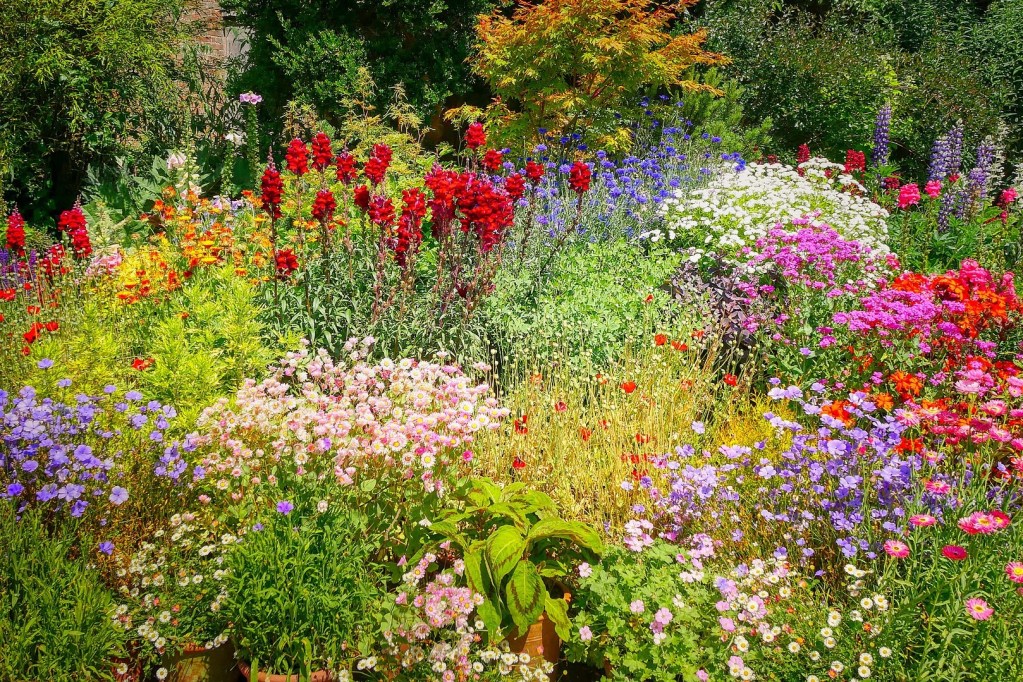There are as many ways to design a garden as there are gardeners, with more variations and methods than we can count. Many of these variations offer benefits, ranging from the soothing effects of zen gardens to the ecological benefits of native wildflower gardens. One beneficial gardening method you might want to try out is no-dig gardening. If you aren’t familiar with this technique, you might be confused by the name. How can you grow a garden without digging? We’ve put together this guide for just that reason, and the answers are simpler than you might imagine.
What is no-dig gardening and is it right for you?

No-dig gardening doesn’t mean you never dig at all — you’ll still need to dig holes if you want to plant seedlings or mature plants. It just means that digging is limited to only the times when it’s necessary. By limiting the amount of digging you do, your garden can more closely mirror the natural environment, leading to fewer weeds, better drainage, and healthier soil.
In addition to limiting your digging, the primary way no-dig gardening is different from regular gardening is that compost is layered on top of the soil rather than mixed into the soil. There is also no tilling or breaking up of the soil. While the no-dig gardening method is most popular in Europe, it works just as well in the U.S.
No-dig gardening, when done right, has a lot of benefits, but it isn’t for everyone. No-dig gardening requires less physical labor, since you don’t need to do as much digging. However, it does require quite a bit of compost or compostable materials (like fallen leaves). Since the compost is sometimes the primary growing medium, rather than a small additive, you need more compost to start a no-dig garden than you do to maintain an established garden. If you don’t compost at home, this can become challenging.
Starting a no-dig garden

Starting a no-dig garden is surprisingly simple. Begin by determining where your garden will be and how big it’ll be. Starting small is always a good idea, as gardens can expand over time. Pay attention to how much sun the garden will get so that you can choose your plants accordingly. The area you choose doesn’t need to be bare earth, but you should pick a spot without large obstructions (like old tree stumps or big rocks that are difficult to remove).
If you want to turn your regular garden into a no-dig garden, all you need to do is layer compost over the soil and add your plants. Starting a no-dig garden from scratch requires just a few more steps. If the area you want to start your garden is covered with grass or weeds, you’ll need to lay down some mulch to smother them. While you can layer the compost directly on top of the grass or weeds, some industrious weeds might survive and some plants with weaker roots may struggle to grow past the grass.
Lay down a layer of any biodegradable mulch first, then pile the compost on top of it. Many gardeners prefer to use non-coated cardboard (as opposed to shiny, wax-coated cardboard), but you can use hay or leaf mulch if you prefer. Since the plants will be growing directly in the compost, you’ll need to cover the garden in roughly 6 inches of compost. Spread it out as evenly as possible, and add your plants.
What plants work best in a no-dig garden?

Most plants can grow in a no-dig garden with patience and practice, but some plants are a bit easier to start with. Avoid larger plants like shrubs and trees while you’re still getting used to the no-dig method, and opt for smaller flowers, fruits, and vegetables instead. When you’re first starting out, it’s also best to avoid tubers, such as potatoes, as harvesting them can be tricky when the soil underneath the compost is still firm. You can still grow potatoes using the mound method, though.
Additionally, the compost will be rich and nutritionally dense. Plants that thrive in poor soil may be overwhelmed by this, especially when the compost is fresh. On the other hand, plants that prefer average or rich soils may experience an explosion of growth, and to the point that they may need extra pruning to keep them under control.
Some of the easiest vegetables to start with are leafy vegetables like lettuce and spinach and smaller root vegetables such as beets and radishes. Fruits like strawberries and raspberries are a great choice, and most native flowers, especially native wildflowers, will thrive in a no-dig garden.
No-dig gardens are fairly simple once you understand how they work. If you want to give it a try, then there’s no reason not to. If you have enough compost to sustain one, a no-dig garden is a simple way to grow most plants.




